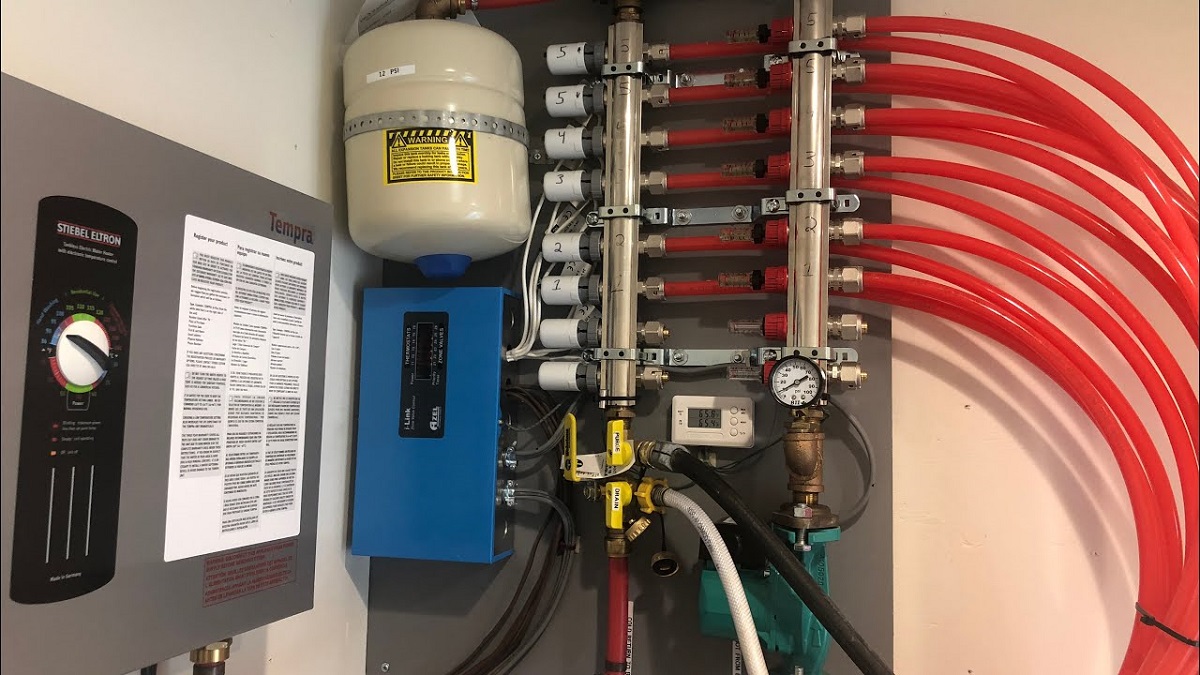How To Safely Fill A Heating System With Glycol?
Using glycol in a heating system is a smart choice for preventing issues like freezing and corrosion, especially in colder areas. Glycol helps keep the system stable, making it a popular option in Glycol heating and cooling systems. However, it’s important to know how to fill the system with glycol correctly. This process involves three things. First, choose the right type of glycol. Next, prepare the system. Then, follow specific steps to avoid problems. Doing it right helps the system stay safe, efficient, and long-lasting.
Choosing The Right Type And Concentration Of Glycol
Choosing the correct type of glycol and mixing it with water at the right concentration is key. Here are the types of glycol commonly used in heating systems:
- Types of Glycol: There are two types of glycol: propylene glycol and ethylene glycol. Propylene glycol is often preferred for heating systems because it’s less toxic and safer for people and the environment. Ethylene glycol is more toxic. It is used less in heating systems but may be preferred in some industrial applications. When choosing, check with your HVAC contractor or system manufacturer to confirm the right type for your system.
- Concentration Levels: The glycol concentration, or how much to mix with water, is important for freeze protection. A common recommendation is a mixture that’s about 40-60% glycol, depending on the climate. In colder areas, higher glycol levels are needed to prevent freezing. Always check the manufacturer’s guidelines for specific recommendations. Each system may vary.
The right glycol and concentration will keep the system from freezing in low temperatures. It will help it run smoothly.
Preparing The System
Before adding glycol, prepare the heating system. Remove any contaminants that could affect its performance.
- Draining Existing Fluid: If the system already has water or an old antifreeze solution, it’s essential to drain it completely. This step prevents contamination that can lower the effectiveness of the glycol. Drain the system carefully by locating the drain valve, often found near the bottom of the unit.
- Flushing the System: After draining, flush the system with clean water to remove any remaining fluid, rust, or debris. This process ensures the system is clean before adding the glycol solution. It helps prevent clogging or harmful chemical reactions. Some HVAC contractors recommend flushing the system twice to ensure it’s fully clean.
Preparing the system carefully helps the glycol work efficiently once it’s added, keeping the heating system free of issues.
Mixing The Glycol Solution
The glycol should be mixed with water to reach the right concentration for your system’s needs. Here’s how to safely prepare the glycol solution:
- Mixing the Glycol: Mix glycol with water at the recommended ratio, like 50-50. It provides good freeze protection. Use distilled water to prevent mineral buildup in the system, as minerals from tap water can cause deposits over time.
- Safety Tips: Glycol is a chemical, so it’s important to take safety precautions. Wear protective gloves and goggles, and mix the solution in a well-ventilated area. Also, be careful not to spill glycol, as it can be slippery and, if ethylene glycol is used, toxic to pets and wildlife.
Correctly mixing the glycol with water will ensure the solution works well in the heating system. It will also protect it from freezing and rust.
Filling The Heating System With Glycol
Filling the system with glycol requires careful steps. Air traps can hurt heating performance.
- Filling Method: Use a pump to add the glycol solution to the system. Many systems have a fill point or access port where you can connect the pump. Adding glycol slowly helps reduce the chance of air pockets. If filling manually, pour the glycol mixture steadily to avoid introducing air.
- Bleeding the System: After filling, it’s important to bleed any air from the radiators, pipes, and other components. Air bubbles or air locks can prevent the system from heating correctly. To bleed the system, use a bleed valve on each radiator or component. Open the valve to release air until only glycol comes out.
- Pressure Monitoring: While filling the system, check the pressure gauge. It must show the right pressure. Too much pressure can damage the system, so it’s important to keep an eye on this while filling.
These steps ensure glycol is added to the system without air pockets. It will work more effectively and efficiently.
Checking For Leaks And Testing
Once the system is filled, checking for leaks is essential to prevent loss of glycol and ensure safe operation.
- Leak Checks: Inspect all connections, pipes, and components to ensure there are no leaks. Glycol leaks can reduce the system’s efficiency and lead to costly repairs. If you spot any wet spots or drips, tighten the connections or, if needed, consult an HVAC contractor for repairs.
- System Testing: Turn on the heating system and let it run for a while to test the flow and ensure the glycol mixture is distributed evenly. Check each radiator and component to confirm they’re heating evenly. An uneven distribution can signal an airlock or other issue that needs attention.
These checks confirm the system is ready for use. They ensure the glycol mixture is protecting it from freezing and corrosion.
Maintenance Tips For Glycol-Filled Heating Systems
After filling the system, regular maintenance will keep the glycol effective and the heating system running well.
- Routine Glycol Checks: Over time, glycol can degrade, which can reduce its effectiveness. Periodically check the glycol level and concentration to ensure it’s still within the recommended range. If levels are low, top up with the same glycol-to-water mix to maintain the concentration.
- Replace Glycol Periodically: Some manufacturers suggest replacing glycol every few years. It can lose its antifreeze and anticorrosion properties over time. This is a simple yet important maintenance step that helps keep the heating system in good condition.
Routine maintenance keeps the glycol solution effective. It protects the system and helps it run efficiently.
Final Steps To Ensure Reliable Glycol System Performance
Filling a heating system with glycol is a critical task for ensuring that it runs well in cold weather. From choosing the right type of glycol to properly filling and bleeding the system, each step matters. Regular checks and maintenance, like those performed by a qualified HVAC contractor, can help keep the glycol and the system in top shape. By following these steps, you can keep your Glycol heating and cooling systems safe, efficient, and ready for winter.
By following this process, you’ll know how to fill a heating system with glycol and maintain it. This will ensure reliable performance and protection for years.




